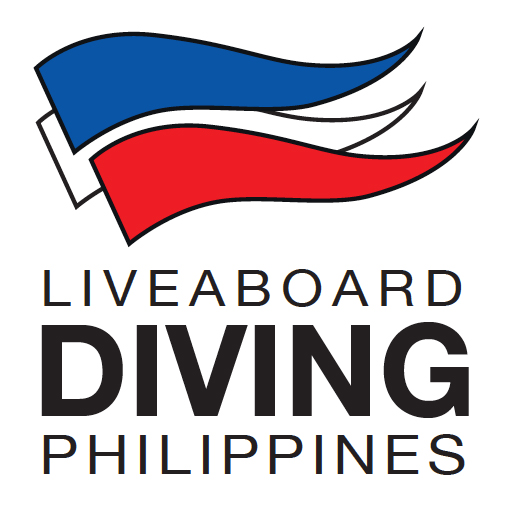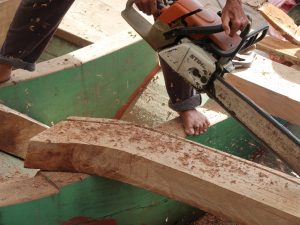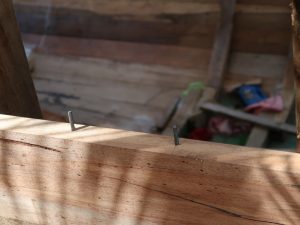Dive Safari boat in the Philippines
Hello, here I am back to you as promised to participate in the further course of the production of our Dive Safari boat in the Philippines.
As I said in the first part of this series, “The Idea for Building a Dive Safari Boat” we started building the hull on a smaller offshore island south of Palawan. Experienced boat builders, who have been building boats for decades using traditional tools and ways of working, now came across a “long nose” that wanted to mix these traditional styles with the modern demands of a safari boat.
It was not always easy to convince the boat builders to follow the plans and ideas.
Sir, no problem! The boat is ok!
We had planned the boat with a total length of 22 meters so that we can offer our guests and their dive and photo equipment a sufficient amount of space. The technical equipment of the boat itself requires immense space and it is already planned before construction pretty much every inch on the boat and is needed in any case.
Also, you can certainly imagine that you cannot always stand next to the boat builders and can make sure that everything runs as you imagine.
For the physical well-being, it requires purchases, materials for the boat must be organized and last but not least, a large number of requirements for registration of the boat at the Philippine Marina must be done.
Once again, I had to leave the island to do many things. For my absence, a week had been planned and the boatbuilders were briefed and had work schedules for the time of my absence.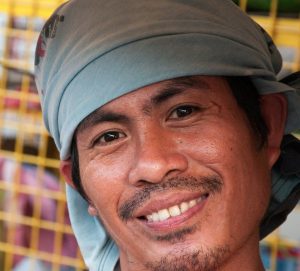
Almost exactly on the fourth day came a surprise call from the foreman, who told to me that they had already done all the work. On one hand the call pleased me, but it also made me a little skeptical, as I had never experienced anything like this in my time in the Philippines. I finished my remaining points and drove back to the island. My surprise was great when I realized that the foreman was really right and the work was done I found a complete hull.
Only at second glance did I realize something was wrong. The boat looked very short and after checking with the tape measure it turned out to be 6 meters short.
My questioning looks wandered to the foreman and he stood before me with a convincing smile and said “Sir, no problem! The boat is ok, we always build the boats here in this length. “.
It is very important to me that this example is not misunderstood. In any case, I do not want to point out inadequacies in Filipino workers but draw attention to the need for very close cooperation.
I have learned so many things about traditional boat building techniques in these weeks on the island that I would like to thank the team on the island once again.
The transfer of the hull
Now we had a six meter too short finished hull and I was faced with deciding what to do. Let’s change the hull here on the island or transfer this hull to the shipyard on the main island.
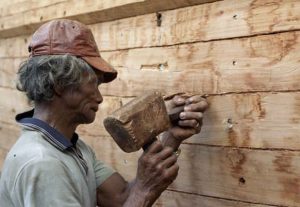 After weighing up various factors, I decided to transfer the hull to the main island and modify it there to finish the boat.
After weighing up various factors, I decided to transfer the hull to the main island and modify it there to finish the boat.
So we started to prepare the hull for the overpass. Anti-roll bars had to be installed and not least the entire hull had to be sealed. To seal the boat the boatbuilders use hemp ropes soaked in a bitumen mass and press it in the transitions between the planks.
At the beginning of May 2018 the time had finally come and we transferred the hull to Palawan and started with the adjustments to the hull. After a few days of work, it turned out that the adaptation of the hull proved to be more difficult than planned and it was almost a complete new construction of the hull. But the local team did a great job and we are back on schedule.
Request to register the boat
As I mentioned before, there is a need to register each boat with the Maritime Industry Authority of the Philippines (MARINA). The MARINA creates and supervises regulations and safety regulations which have to be observed during the construction and operation of a Dive Safari boat in the Philippines. The marina also gives permission in which waters which boat is allowed to operate.
Why am I telling this at this point? Rumors and unconfirmed half-knowledge of some people left us with a certain amount of concern about the registration of our boat.
The main idea of all discussions was that the MARINA will no longer issue registration for wooden-hulled Dive Safari Boat in the Philippines with an open sea operation area. Long studies of the published decrees and discussions with the responsible persons of the Marina brought then light in the dark. Yes, there will be this restriction only this counts for boats with less than 35 Gross Tonnage. Big breath on my side because our boat is well above this limit.
The people in charge of the marina put us in these talks close to lay out the hull in fiberglass because this is not quite so elaborate in the current stage of the boat. We decided to follow this advice to prevent future changes in registration and operational requirements.
This little episode with the marina slowed down the speed of the boat a little bit and, with a reinforced team in the last week of May, resumed work and nearly completed the hull. Work on fiberglass is also in full swing and plans are to begin in the first week of July with superstructures and cabins.
In the following again a small slideshow with current photos from the boat.
Next info will follow soon when we start with the superstructure and the engines are built into the fuselage.
Do not hesitate to contact us if you would like to know more details about construction, plans or if you are interested in one of our tours with our Dive Safari Boat in the Philippines.
 English
English 简体中文
简体中文 Deutsch
Deutsch